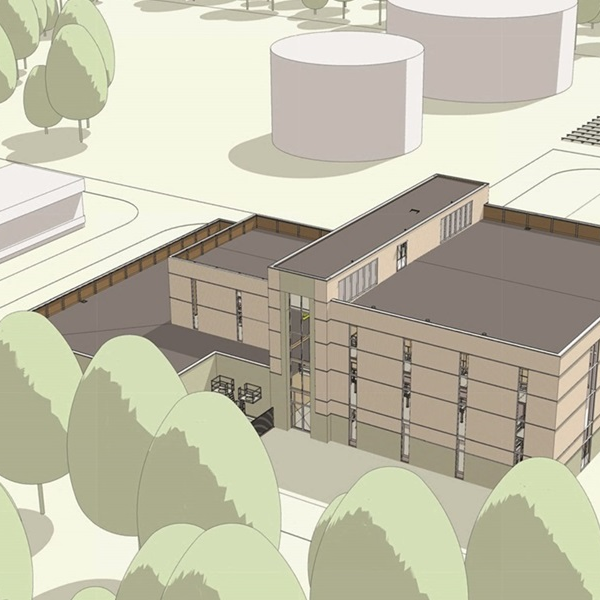New Sellingen filter building facilitates capacity expansion Waterbedrijf Groningen

New Sellingen filter building facilitates capacity expansion Waterbedrijf Groningen
Waterbedrijf Groningen wants to meet the increasing demand for drinking water by reducing its own water consumption and advising its customers to be economical with water. In addition, the company is attempting to expand its capacity, partly by renovating its production location in Sellingen. The renovation activities include a new filter building where Witteveen+Bos worked with the client to draw up the design and oversee all permit-related affairs.
The drinking water location in Sellingen, which is located in South East Groningen, serves part of the population in the region. The area is primarily dominated by agriculture and tourism. The production location, which has been operational since 1972, has a capacity of circa two million m3 per year. Considering the increasing demand, the company expects this to become insufficient in the near future. Because the location in Sellingen has a permit to extract 3.5 million m3 of groundwater, Waterbedrijf Groningen has a certain amount of room for growth. In the meantime, the pump house at the Ir. A. Polstra pumping station has been renovated. The next step involves tackling the purification area, where the existing filter building will be replaced by a new one.
The filter building - everything under one roof
The filter building, which produces drinking water from methane-based groundwater, contains the purification phase, the pumping phase, the chemicals, the energy supply and the gas processing needed to transform groundwater into drinking water. The whole purification process consist of three main processes: the water line, the rinse water line and the (natural) gas line.
The water line has been set up as follows: vacuum degasification, rapid sand filtration (pre-filtering) and aeration/degasification. In order to remove the remaining particles and avoid biological oxidation reactions, the water - dosed with iron chloride - is passed through a second sand bed (post-filtration).
Caustic soda is then added to increase the pH and saturation index of the water. Each main component in the process has a redundant set-up, to guarantee continuous operation and the supply of drinking water. Process components such as sand filters are regularly flushed in order to keep them clean.
Besides the purification processes, we have also integrated the filter building's whole energy supply into the design. An important part of this is the emergency power generator (EPG) , which includes diesel storage so the whole purification chain remains operational even if there are long power cuts in the region.
Re-use rinse water
Rinse water is collected and processed in the rinse water line. This is where rinse water is mostly upgraded to drinking water. This is realised by implementing immersed ultra-filtration membranes (UF). The UF permeate (clean water from the UF) is thus returned to the post-filters in the water line in order to eventually become drinking water. The UF concentrate - which is contaminated water that is released when the UF is rinsed - is sent to the sludge buffers. This is where it is further thickened and transported using lorries.

Gas line
The gas line is made up of two main installations. The first, which consists of vacuum degassers, is linked to the water line. Groundwater is passed through a drum under vacuum, whereby the gas dissipates from the water and is extracted. The gas is then guided to a separate installation underground. This is where the gas is stored and flared. While other (more sustainable) processing methods for the gas line were considered, flaring was eventually chosen due to the gas quality and quantity, and because the alternative options were not yet fully developed. However, space has been reserved at the location to process gas in a sustainable manner, once a suitable technology becomes available.
Permits
Besides technical activities, Witteveen+Bos was also responsible for a leading role in the permit process, which included coordinating and executing exploratory surveys. For instance, noise surveys were carried out for the realisation and operation of the filter building. Nitrogen deposition had to be carefully researched and substantiated, bearing in mind the nearby located Natura 2000 area. Various target species (fauna) were also studied. Soil surveys (preliminary research, drilling and eventually trial trenches) were used to examine whether archaeological finds were present, while this also allowed pollutants in the ground to be identified. Sellingen has a rich history; the Angerdorf originates from the 12th century.

Multi-disciplinary collaboration
Bearing in mind the multi-disciplinary nature of the project, we collaborated intensively with other parties during the design process, such as Team4 (architect), SmitsRinsma (site layout & infrastructure) and various suppliers. All this was done in close collaboration and coordination with Waterbedrijf Groningen.
More information?
